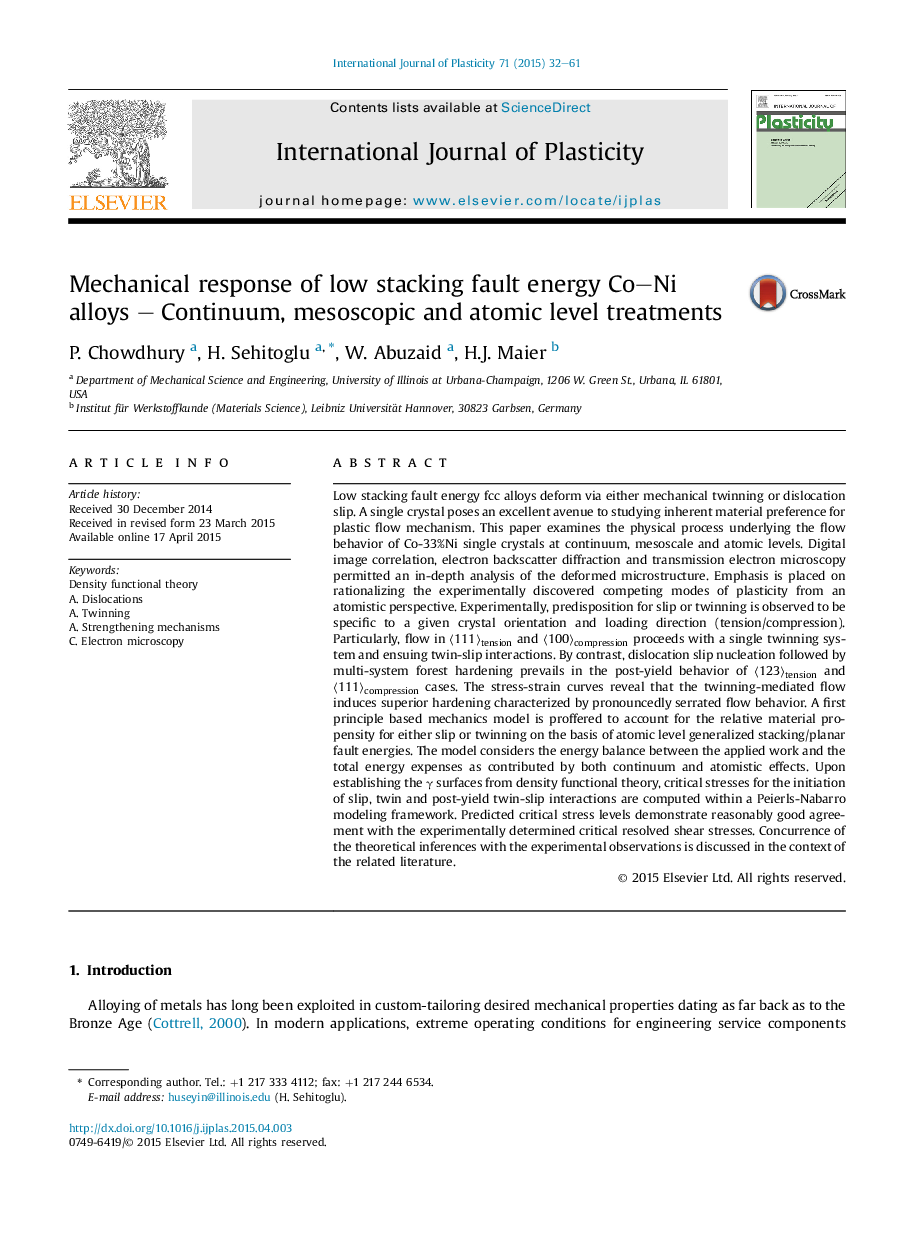| Article ID | Journal | Published Year | Pages | File Type |
|---|---|---|---|---|
| 786088 | International Journal of Plasticity | 2015 | 30 Pages |
•We study deformation behavior of low staking fault energy Co–33%Ni alloys.•Loading direction and/or crystal orientation strongly affect stress–strain response.•Deformed microstructure is studied using DIC, EBSD and TEM techniques.•A model is proposed to predict critical stresses considering both continuum and atomistic effects.•GSFE and GPFE landscapes are calculated from first principles and used in predicting critical stresses.
Low stacking fault energy fcc alloys deform via either mechanical twinning or dislocation slip. A single crystal poses an excellent avenue to studying inherent material preference for plastic flow mechanism. This paper examines the physical process underlying the flow behavior of Co-33%Ni single crystals at continuum, mesoscale and atomic levels. Digital image correlation, electron backscatter diffraction and transmission electron microscopy permitted an in-depth analysis of the deformed microstructure. Emphasis is placed on rationalizing the experimentally discovered competing modes of plasticity from an atomistic perspective. Experimentally, predisposition for slip or twinning is observed to be specific to a given crystal orientation and loading direction (tension/compression). Particularly, flow in 〈111〉tension〈111〉tension and 〈100〉compression〈100〉compression proceeds with a single twinning system and ensuing twin-slip interactions. By contrast, dislocation slip nucleation followed by multi-system forest hardening prevails in the post-yield behavior of 〈123〉tension〈123〉tension and 〈111〉compression〈111〉compression cases. The stress-strain curves reveal that the twinning-mediated flow induces superior hardening characterized by pronouncedly serrated flow behavior. A first principle based mechanics model is proffered to account for the relative material propensity for either slip or twinning on the basis of atomic level generalized stacking/planar fault energies. The model considers the energy balance between the applied work and the total energy expenses as contributed by both continuum and atomistic effects. Upon establishing the γγ surfaces from density functional theory, critical stresses for the initiation of slip, twin and post-yield twin-slip interactions are computed within a Peierls-Nabarro modeling framework. Predicted critical stress levels demonstrate reasonably good agreement with the experimentally determined critical resolved shear stresses. Concurrence of the theoretical inferences with the experimental observations is discussed in the context of the related literature.
